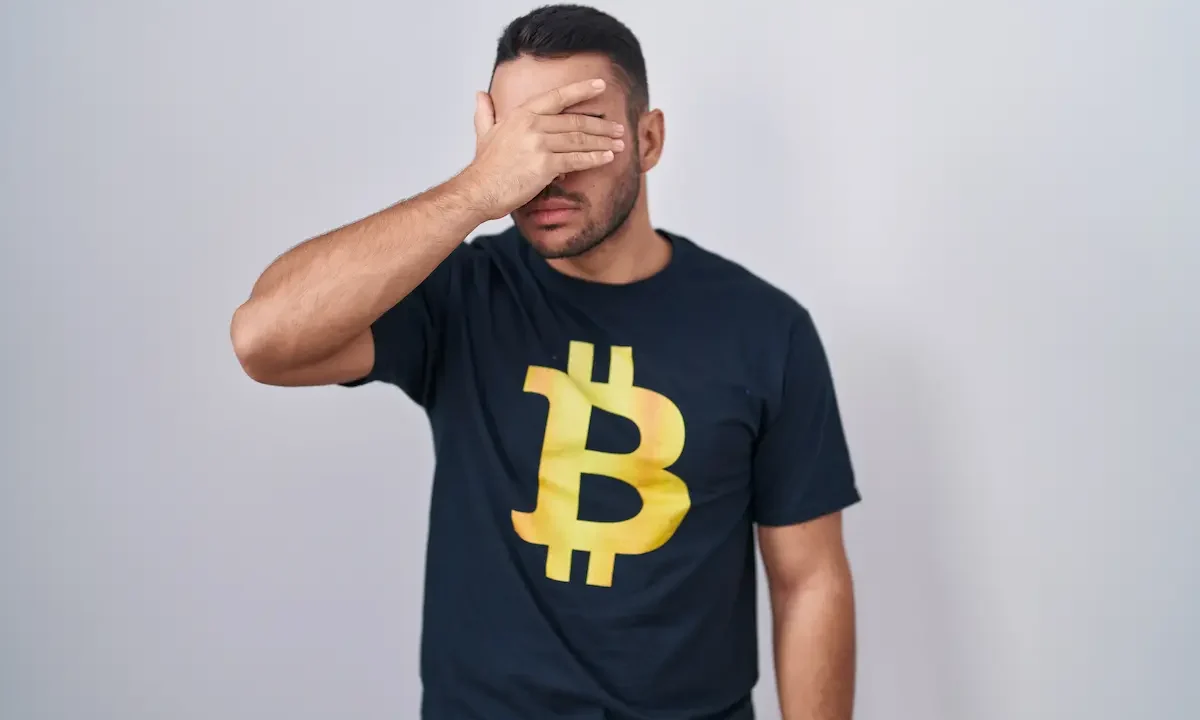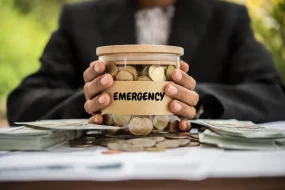
Cryptocurrency has taken the world by storm. From Bitcoin millionaires to viral tokens like Dogecoin, the digital currency space has been hyped as the future of money. But behind the promises of decentralization and financial freedom lies a risky and unstable world that few truly understand.
In this blog, we’ll break down the serious problems with cryptocurrency — from wild price swings to scams and even environmental damage. Whether you’re a curious newcomer or someone considering an investment, it’s important to know why cryptocurrency might be more dangerous than it seems.
What is Cryptocurrency and How Does It Work?
Before diving into the dark sides of crypto, let’s first understand what it really is.
Cryptocurrency is a type of digital or virtual currency that uses blockchain technology to operate. Unlike traditional money (like dollars or taka), cryptocurrencies are decentralized — meaning no central bank or government controls them. Instead, transactions are verified by users across a global network of computers.
Popular examples include:
- Bitcoin (BTC) – the first and most well-known cryptocurrency
- Ethereum (ETH) – used not just as money, but for building apps via smart contracts
Transactions happen peer-to-peer, are publicly recorded, and in theory, are secure and transparent.
But… is it really safe?
Let’s look at the downsides that many people overlook.
Major Disadvantages of Cryptocurrency
Cryptocurrencies may sound revolutionary, but their risks can easily outweigh their benefits — especially for average users.
Extreme Price Volatility
One of the most well-known issues with crypto is its wild price swings. A single tweet or news article can cause a coin to skyrocket or crash overnight.
- Example: Bitcoin went from over $60,000 in 2021 to under $20,000 in 2022 within months.
- This volatility makes crypto unpredictable and unsuitable for long-term financial planning.
- Investors can gain huge profits — or lose everything — in a very short time.
Lack of Regulation & Legal Protection
One of the most dangerous aspects of cryptocurrency is the absence of clear laws and regulations in many countries. While some governments have started introducing crypto guidelines, the majority of the market still operates in a legal grey area.
This lack of oversight creates several risks:
No Consumer Protection
If your money is stolen from a crypto exchange or lost due to a failed transaction, there’s no central authority to help you recover it — unlike banks, which are insured and regulated.
Scams and Fake Projects
Because crypto is unregulated, it’s easy for bad actors to launch fake tokens, manipulate prices, or run Ponzi schemes.
- Example: The Squid Game token pumped rapidly in 2021 — then crashed to zero after the developers ran off with the money.
Legal Uncertainty
Many crypto users don’t even know if what they’re doing is legal. Governments can suddenly ban, restrict, or heavily tax crypto assets — leaving investors in a tricky situation.
High Risk of Cybercrime
Despite being advertised as “secure,” the cryptocurrency world is riddled with cyber threats. In fact, crypto is one of the top targets for hackers globally — and unlike traditional banking, there are usually no safety nets.
Exchange Hacks
Centralized crypto exchanges often hold billions in digital assets. This makes them attractive to cybercriminals.
- Example: In 2014, Mt. Gox — the largest Bitcoin exchange at the time — was hacked, and over $450 million worth of Bitcoin was stolen.
- More recently, in 2022, FTX collapsed, revealing misuse of customer funds and poor security protocols.
Wallet Vulnerabilities
Even if you store crypto in your own digital wallet, it’s not completely safe:
- Malware can steal your private keys.
- If you lose your seed phrase, you lose access to your funds permanently.
There is no “Forgot Password” button in crypto.
Phishing and Social Engineering
Scammers often impersonate crypto platforms or influencers:
- Fake airdrops
- Giveaway scams (e.g., “Send me 1 BTC, I’ll send 2 BTC back”)
- Clone websites that look identical to real ones
Environmental Concerns
While cryptocurrency is digital, its environmental impact is very real — and very damaging. The energy consumption required for many crypto networks, especially Bitcoin, is shockingly high.
Energy-Hungry Mining
Bitcoin and other Proof-of-Work cryptocurrencies rely on a process called mining, where powerful computers solve complex puzzles to validate transactions and earn rewards.
- This process requires massive computational power and runs 24/7.
- According to research, Bitcoin mining consumes more electricity annually than some countries, like Argentina or the Netherlands.
Carbon Footprint
Most mining operations use electricity from non-renewable sources like coal, especially in countries where electricity is cheap but dirty.
This leads to:
- High carbon emissions
- Worsening of the global climate crisis
- Increased pressure on power grids
Electronic Waste
Crypto mining rigs (special computers called ASICs) become outdated quickly. When they’re replaced, huge amounts of e-waste are generated, contributing to environmental degradation.
Psychological and Social Risks
Cryptocurrency doesn’t just affect your wallet — it can impact your mindset, behavior, and overall well-being. For many, investing in crypto becomes more than just a financial choice — it turns into an obsession.

Addiction to Trading
Crypto markets are open 24/7, unlike stock markets. This creates a constant urge to monitor prices, buy low, sell high — even in the middle of the night.
- People stay up late checking charts
- Miss work, family time, or sleep
- Feel panic or euphoria with every price swing
This behavior mirrors gambling addiction, and it can spiral out of control quickly.

“Get Rich Quick” Mindset
The crypto space often promotes the idea that anyone can become a millionaire overnight.
Terms like:
- “Mooning”
- “To the moon”
- “HODL”
- “Pump it!”
…create unrealistic expectations and reckless investing.
Emotional Toll
When coins crash (which they often do), people experience:
- Anxiety, regret, and depression
- Loss of savings
- In some tragic cases, even suicide
Common Cryptocurrency Scams & Red Flags
As crypto has grown, so have the scams. Since there are few regulations and users often lack technical knowledge, the crypto space is a paradise for fraudsters.
Ponzi and Pyramid Schemes
Many fake crypto projects promise:
- High returns in a short time
- Referral bonuses for bringing in new users
- Guaranteed profits
In reality, they use new investors’ money to pay old ones — a Ponzi scheme.
Example: BitConnect — once promoted by influencers, but later exposed as one of the biggest scams in crypto history.
Fake ICOs and Rug Pulls
New coins often launch with a buzz through Initial Coin Offerings (ICOs) or decentralized platforms. But many of these are fake.
A rug pull is when developers hype up a coin, collect investor money, and then disappear, leaving the token worthless.
Example: The Squid Game token soared 75,000% before crashing to $0 — developers ran off with all the money.
Fake Influencers and Social Media Hype
Scammers often impersonate celebrities or crypto experts to gain trust.
They’ll post:
- Fake giveaways (e.g., “Send me 1 ETH, I’ll send 2 ETH back”)
- Photoshop screenshots of big profits
- Links to fake websites
Even verified Twitter/X accounts have been hacked to run such scams.
Red Flags to Watch For
- Promises of guaranteed profits
- Pressure to invest quickly (“limited time offer”)
- No real team or whitepaper
- Poorly written websites
- Anonymous founders

Is There a Safe Way to Use Crypto?
Despite the many risks, some people still choose to use cryptocurrency, either as an investment or for transactions. So the question is: Is there a safer way to do it?
Use Reputable and Regulated Platforms
If you’re going to buy or trade crypto, always use well-known, licensed exchanges. Examples include:
- Coinbase
- Binance (in supported regions)
- Kraken
Avoid platforms with no clear ownership, no customer support, or shady marketing tactics.
Store Your Coins Safely
Never keep large amounts of crypto on exchanges. Use:
- Hardware wallets (e.g., Ledger, Trezor)
- Cold storage (offline wallets that aren’t connected to the internet)
This reduces the chance of being hacked or losing your assets in a platform collapse.
Educate Yourself Before Investing
Always research:
- What problem does the coin solve
- Who’s behind it
- How it works (whitepaper, use case, tokenomics)
Avoid coins that exist only for hype or memes.
Only Invest What You Can Afford to Lose
Cryptocurrency is high-risk. If you’re going to invest, treat it like gambling — never put in money you can’t live without.
Watch Out for Red Flags
Stay skeptical of:
- Guaranteed returns
- Pressure to “act now”
- Influencers promoting random coins
Frequently Asked Questions (FAQ)
Q1: Is cryptocurrency a scam?
Answer:
No, cryptocurrency itself is not a scam. Technologies like blockchain and coins like Bitcoin or Ethereum have real use cases.
However, the industry is filled with scams — fake coins, Ponzi schemes, and shady influencers.
So while crypto is not a scam, many people get scammed inside the crypto world.
Q2: Why do experts warn against crypto investment?
Answer:
Experts often warn because:
- The market is highly volatile
- There’s little to no regulation
- Many coins have no real value
- And scams are everywhere
They say it’s not suitable for average or risk-averse investors.
Q3: Can I lose all my money in crypto?
Answer:
Yes. If:
- The market crashes
- Your wallet gets hacked
- You fall for a scam
- Or the project disappears…
…then there’s usually no way to recover your funds. Unlike a bank, there’s no customer support or government protection.
Q4: Why is crypto considered bad for the environment?
Answer:
Mostly because of Bitcoin mining, which uses massive amounts of electricity, often from non-renewable sources like coal.
It contributes to:
- High energy usage
- Carbon emissions
- E-waste from outdated mining rigs
Q5: How can I tell if a crypto project is a scam?
Answer:
Watch for red flags like:
- Unrealistic promises (“double your money”)
- No known team or whitepaper
- Poor website and anonymous founders
- Pressure to invest quickly
When in doubt, stay out.
Final Thoughts – Should You Avoid Crypto?
Cryptocurrency is one of the most controversial technologies of our time. For some, it’s a symbol of financial freedom and innovation. But for many others, it’s a source of confusion, loss, and regret.
Let’s recap the major concerns:
- Highly volatile and unstable prices
- Lack of regulation and legal protection
- Emotional and psychological risks
- Widespread scams and fraud
- Environmental damage
- Constant threat of hacks and theft
While it’s true that crypto has potential — in theory — the current reality is dangerous and unpredictable, especially for new or unprepared users.
So, should you avoid crypto?
If you’re not highly experienced, willing to lose money, and constantly updated with news and security, then yes, it’s safer to stay away.
For most people, traditional investments and savings tools are far more stable, secure, and sensible.
Cryptocurrency isn’t a shortcut to wealth — it’s a shortcut to risk.







